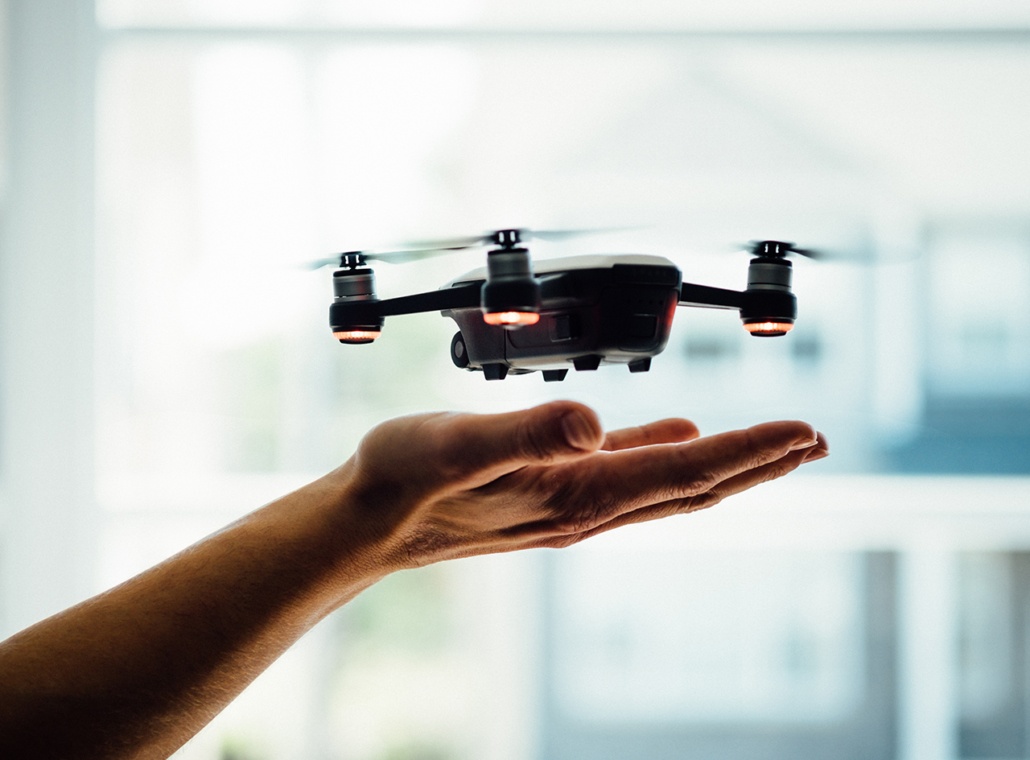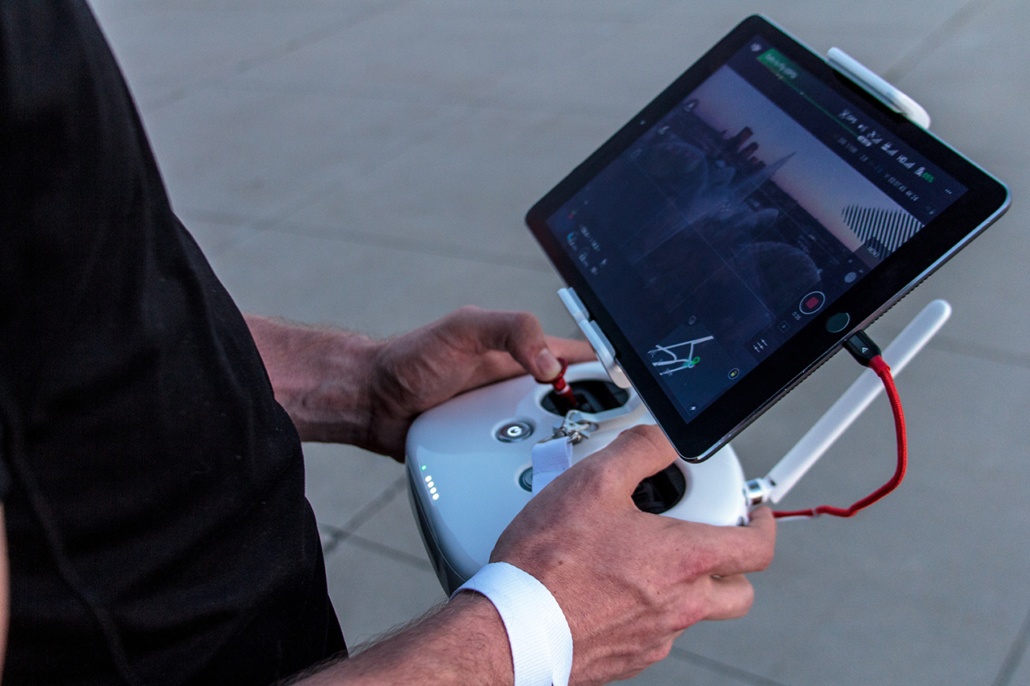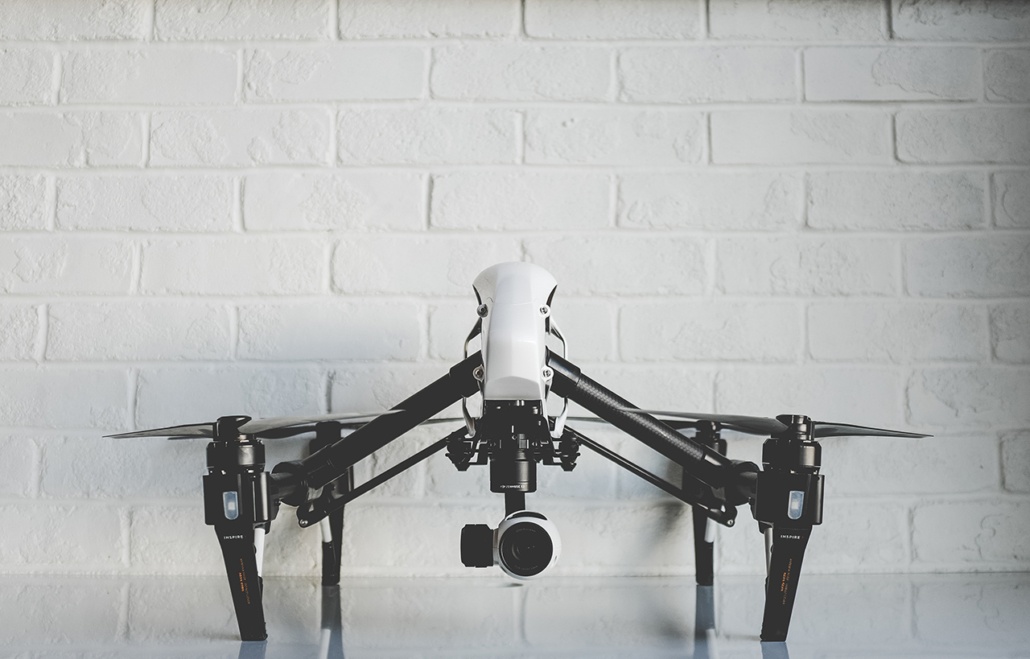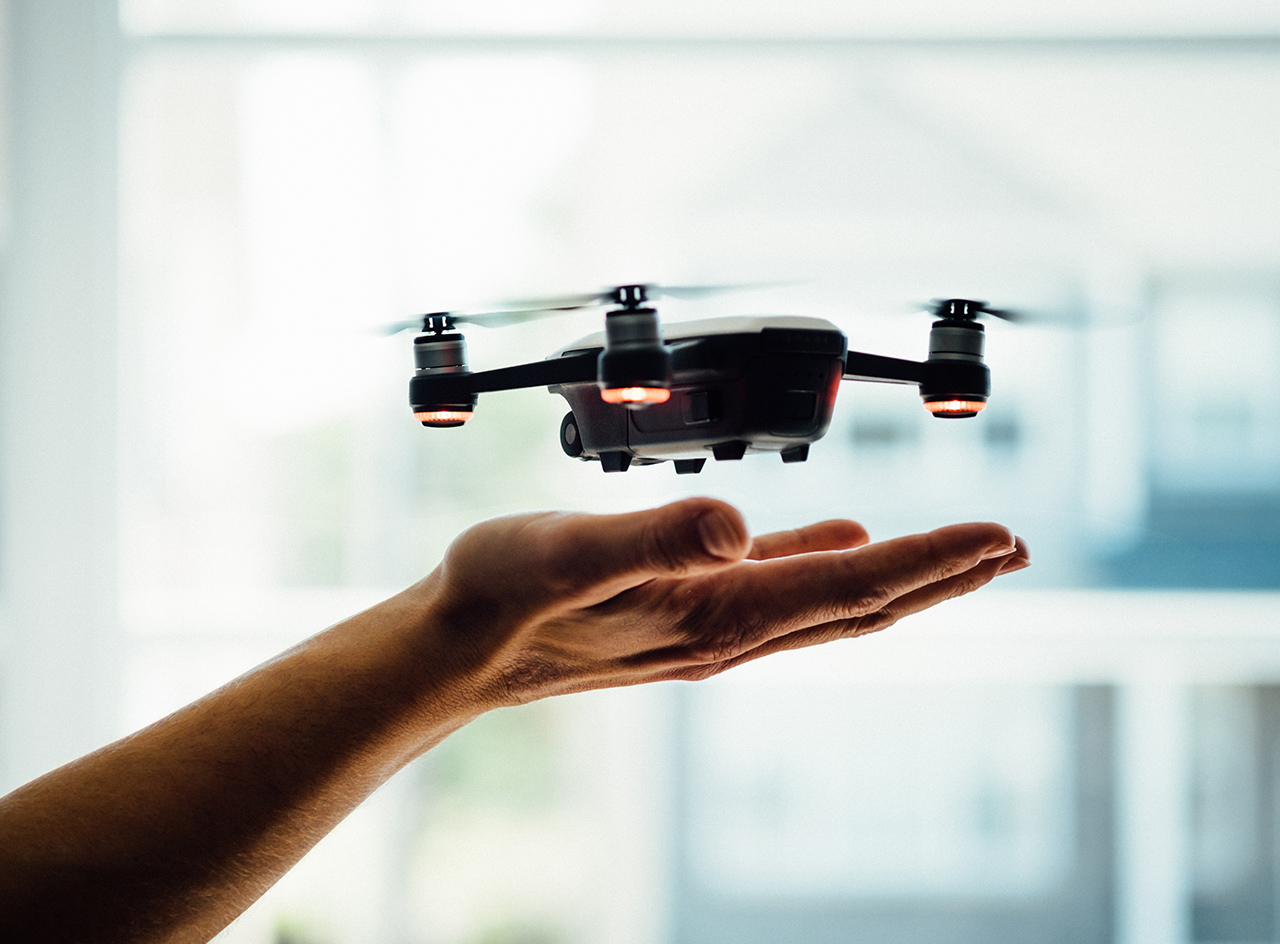The pioneering drone community realised the power of the technology from the outset. Drones can be utilised across multiple disciplines, from aerial video capture to delivering packages in remote locations. In construction, the benefits can range from monitoring site progression to highlighting faults or errors.

“The two most broad ways of thinking about [how drones are used on a construction site]: understanding construction progress … using drone photos, drone maps and 3D models to map exactly what’s happened on a construction site,” DroneDeploy CEO Mike Winn explained in an interview on the subject. “The second way is using drones to help with site modelling—understanding the topology of the land before something gets built and bringing that into BIM software as a basis for planning.”
Moving away from the traditional surveying methods, drones make it possible to capture the exterior of a site far more cost-effectively and in extremely high definition. Autodesk’s Tristan Randall explained, “We’re seeing a lot different use cases, ranging from things like inspecting wind turbines—which may not involve 3D modelling but just using imagery or video—all the way to mapping huge mining sites, where you actually take that data into one of our design platforms like Civil 3D and InfraWorks and perform quantity take-offs, design new facilities and perform quantitative analyses”.

Despite what many may think, modern drones do not require the skills of an airline pilot in order to operate them. In fact, many of today’s drones fly autonomously, between designated points, capturing repeat imagery. On top of this, the software has become more sophisticated with ‘sense and avoid’ technology.
What Are The Obstacles?
As is the way with all new market disrupting technology, there is resistance to the adaptation of new approaches in performance. Drones are no different, especially when some may see them as just a fad.
Alongside these presumptions was the fact that high quality drone hardware was extremely expensive, putting this new technology out of reach to most companies and enthusiasts.
Today though it is a different story. Drone technology has advanced incredibly and when you combine this with a much lower price point, it makes commercial sense to begin investing in it.
Another obstacle that comes from the use of UAV’s is the conflict with existing professions in the industry. An example would be surveyors, who now compete with a device that can capture and render much of an exterior of a building and bypassing their skillset and expensive laser measuring equipment.
But again, this comes down to the resistance to adapt. Surveyors would still be required for analysis and official sign-offs, things that cannot be handled by a robot.
One huge obstacle for drone enthusiasts (professional or hobbyist) is regulation. The mainstream media have highlighted numerous events in the last couple of years where UAV’s have disrupted sporting events and even international airports. Each country is implementing their own set of rules and devices in order to combat this disruption, from fines to infrastructure that brings down any drone flying in its vicinity.
But these should not be viewed as hinderances, just further adaptation to a new era of technology.
The Future is UAV
Now that the device has become affordable with high quality features, the rate of progression will be determined by the advancement in software used to interpret the data that’s gathered.
Speaking with WME’s Associate Engineer, Kareem Rui, he said “Drones are rapidly evolving in the engineering field and becoming one of the most effective tools for real-time construction monitoring. Combining the collected data with the right software can provide engineers the necessary information to track workflow, resources and ensure smooth delivery according to the allocated budget. The fact that you can monitor the project’s progress remotely increases the whole team’s efficiency as it reduces travel time to site and resource expenditure, while you can support and highlight any potential issues wherever you are in the world.”
“The latest advance in commercial drones is the recently introduced x-ray technology which is utilising Wi-Fi signals to penetrate certain materials to create high resolution 3D imagery of unknown areas behind walls. It would be interesting to see how this technology emerges in the coming years”.
With the right software to gather the data, UAV’s could contribute vastly in the development of BIM, the reduction of project schedules, budgets and error tracking. From those interviewed on the subject, it is clear that the engineering and construction industry is waking up to this new technology. The pros are now clearly outweighing the cons and soon drones will become an integral part in the construction process across the world.

Other News
- Congratulations to Purnachandra for achieving the Dubai Municipality Certification for Construction Engineering Services
- Congratulations to Rishad for his WELL Approved Practitioner Certification!
- Congratulations to Arshana for passing LEED GA certification exam!
- Congratulations to the new MIET members, Zeinab & Arshana!
- WME won two CBNME MEP Awards 2023




